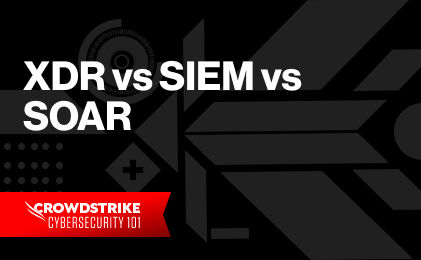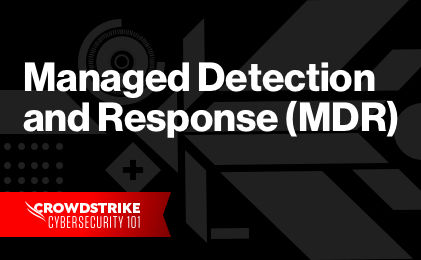What is managed SIEM?
Security information and event management (SIEM) tools have evolved quite a bit since Gartner first coined the phrase in 2005. SIEM tools started out focusing on basic log management with an eye toward compliance, but they now offer complex security event monitoring and analytics for threat detection, investigation, and response. What has driven this evolution? The growing sophistication of cyber threats, which has led to the need for more advanced incident response capabilities.
The introduction of managed SIEM was a step further in this evolution, providing organizations with outsourced expertise and advanced security technologies. Managed SIEM gives you the functionalities of traditional SIEM but with the benefits of a managed service model. Along with the strengthened security posture that traditional SIEM affords your organization, you can offload the burden of managing complex SIEM technologies in-house.
In this post, we'll explore how managed SIEM differs from traditional SIEM solutions. We’ll consider its key features, benefits, and challenges. Finally, we’ll look at the major considerations to keep in mind when choosing a managed SIEM provider.
How managed SIEM differs from traditional SIEM
Unlike traditional SIEM — which comes with the infrastructure and management overhead of maintaining the solution in-house — managed SIEM hands this responsibility over to external experts. For organizations that want to stay one step ahead of threat actors but can’t stomach the added operational strain, managed SIEM is a big win.
A big difference in the managed SIEM approach lies in service delivery. Managed SIEM providers use cutting-edge technology and expertise to monitor, analyze, and respond to security threats around the clock. This lifts the heavy burden off internal teams and ensures that even the most subtle threats don't slip through the cracks.
By moving to a managed service model, businesses tap into a pool of expertise and resources that would be expensive or even impossible to develop on their own.

The Complete Guide to Next-Gen SIEM
Download CrowdStrike's Complete Guide to Next-Gen SIEMs to learn about the evolution of SIEM and how the shift from legacy to modern SIEM technology is critical for the SOC of the future.
Download NowKey features of managed SIEM
Managed SIEM services offer a suite of features designed to enhance your organization's cybersecurity efforts. Here's a closer look at some of them:
- Centralized log management: Aggregating all log data from across an organization’s diverse sources is the cornerstone of any SIEM solution. With all logs in a single place, SIEM simplifies monitoring and analysis.
- Real-time monitoring and analysis: The managed SIEM solution monitors and analyzes your security data at all times. This yields an immediate identification of potential threats, ensuring a timely response to security incidents.
- Compliance management: A managed SIEM solution automates the collection, analysis, and reporting of security data, helping your organization meet regulatory compliance requirements.
- Threat intelligence: A managed SIEM solution integrates threat intelligence from expert cybersecurity sources. With this up-to-date information on emerging threats in hand, the SIEM solution boosts its ability to detect and respond to sophisticated threats.
- Advanced analytics: Managed SIEM solutions leverage machine learning and behavioral analytics to identify patterns and anomalies that might indicate a security threat — one that traditional security methods might miss.
The benefits and challenges of managed SIEM
Adopting managed SIEM brings several advantages, including:
- Enhanced security posture: With around-the-clock monitoring and expert threat detection, you can significantly improve your organization’s ability to fend off cyberattacks.
- Cost-effectiveness: Your organization can cut its need for in-house security operations centers and specialized staff.
- Access to specialized expertise: Managed SIEM connects you with the skills and knowledge of seasoned security professionals. Incident response times and outcomes improve.
Though managed SIEM brings many benefits, it's not without its challenges. Here are several to consider:
- Integration complexities: Merging managed SIEM with your existing IT infrastructure can be complicated. Smooth integration requires careful planning.
- Data privacy concerns: To do its job effectively, the third-party managed SIEM service provider will have some access to your sensitive security data. This may raise concerns about data privacy and protection that you will need to think through and address.
- Understanding the shared responsibility model: Organizations must clearly understand which security aspects are managed by the provider and which remain their responsibility to avoid gaps in their security posture.
Falcon Next-Gen SIEM Data Sheet
Download this data sheet and learn the key features and benefits of Falcon Next-Gen SIEM.
Download NowHow to choose a managed SIEM provider
Choosing the right managed SIEM provider is an important decision. What are the big questions you should ask? What consideration should you take into account?
Start by assessing the expertise of potential providers. Choose one with a strong track record in cybersecurity. Has the potential provider demonstrated deep knowledge and a proactive approach to emerging threats? The right provider should have a history of successfully managing complex security environments.
Next, consider the technology employed by the provider. Look for solutions that utilize the latest in security analytics, threat intelligence, and integration capabilities. If the provider offers a robust platform that can seamlessly integrate with your existing infrastructure, this will make your life easier.
Cost is another critical factor. It’s crucial to understand the value delivered. Evaluate the total cost of ownership — including setup, maintenance, and potential scalability costs — to ensure the managed SIEM solution aligns with your budget and offers a good return on investment (ROI).
As your business grows, your cybersecurity needs will evolve. You’ll need a managed SIEM provider that brings scalability. Can the solution scale up to meet increasing demands without compromising on performance or security? If the provider can promise reliable scalability, then this will prevent headaches down the road.
Finally, customer support is key to a successful partnership. Ensure your provider offers comprehensive support, including training, incident response assistance, and a clear communication channel for addressing any issues that may arise.
Falcon Next-Gen SIEM: a SIEM solution from CrowdStrike
CrowdStrike Falcon® Next-Gen SIEM offer state-of-the-art features that ensure organizations are not just protected against current threats but are prepared for future challenges. With CrowdStrike, businesses can leverage advanced threat intelligence, seamless integration, and unparalleled expertise to maintain a robust security posture.





